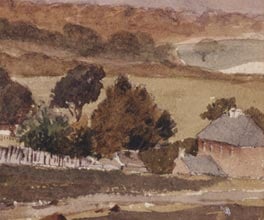Pentridge Prison
Pentridge prison was Victoria's largest prison complex, and housed some of the state's worst criminals, including Ned Kelly, Harry Power and ‘Chopper' Read. Built to take some of the pressure off the Old Melbourne Gaol, Pentridge was originally a fairly shabby building:
... A man of ordinary strength could push out the weatherboards with a single thrust of his arm. The shingles may be poked off the roof with a stick from the inside. If the flooring boards are lifted, the whole gang could walk out, for the building is in piles some feet from the ground and below the floor is not enclosed.
– The Argus, 5 December 1850
Lynne P & Armstrong G 1996, From Pentonville to Pentridge, State Library of Victoria, Melbourne, Vic.
In 1857, the construction of a much stronger prison began. The new complex was surrounded by a six-metre high wall and contained:
- a large main entrance, behind which were offices, warden accommodation and the armoury
- improved staff sleeping quarters
- a hospital
- five parallel cell blocks, including the notorious underground ‘C' Division, which had the smallest, darkest and least ventilated cells
- an industrial area, designed to help prisoners develop skills while in prison
- an adjoining farm area for prisoners to work
- workshops, including a tailor shop, woollen mill and a shoemaking shop
- a separate division for female prisoners, who had until then been housed on the prison ship Success.
Executions were carried out using a hanging beam in ‘D' Division. Next to the beam was the special cell where the condemned man spent his last night. Twice the size of regular cells, it had room for an overseer, to make sure the man did not commit suicide before the hanging. In this larger, more comfortable cell, the prisoner could have whatever he chose for his last meal, but no visitors were allowed except a priest or chaplain.
By the 1990s, the Coburg council was campaigning to move the prison, as it was in an urban area and bordering a school. In 1997, part of the prison was closed as part of the government's decision to privatise prisons. The rest of the prison was closed in 1999 and sold to developers, who have retained the outer walls and main entrance, but built a housing estate inside on the grounds.











